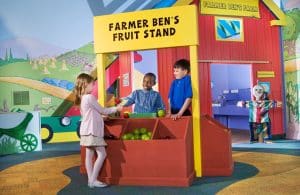While most parents agree that reading is important, many of us struggle with how to foster a love of reading at a time when electronic devices vie for the attention of our kids. How can some bound sheets of paper with writing on them compete with games and apps designed to offer challenge and reward in the perfect mix to create addiction? And, as parents, how can we get kids to read without making it sound like punishment? “Step away from the Xbox and read for 20 minutes!”
One way to help develop a love of reading, and a habit of it, is to make it part of your daily (or at least weekly) routine. If you’re lucky enough to still have a family dinner time, make the 15 minutes after the meal reading time for everyone, then begin cleanup after a few chapters have been consumed.
Alternatively, begin the bedtime routine a few minutes earlier, building in an automatic time to read to the younger kids, but also take time to read to or with the older kids in the family. Once children begin reading independently, their own reading level still lags what they can understand and appreciate if it is read to them. Taking the time to read with older kids still helps them to develop as readers and is a great time to bond and share your thoughts about the stories. Find a great chapter book, and you will have the kids clamoring for the next couple of chapters, night after night.
Another way to incorporate reading into your family time is to make it a fun event. Who doesn’t love the relaxing atmosphere at a bookstore that serves coffee and desserts? Have your own family coffeehouse night, serving hot chocolate and having the whole family tuck into a cozy spot for an hour of reading.
Another way to make reading time all about fun is to choose a bookstore, library or park to visit for the purpose of hanging out and reading for a while. This could be a good monthly tradition, made more interesting if you vary the locations and try some bookstores or places that you wouldn’t normally go.
Of course, the ultimate way to get kids excited about reading is to help them find the books and stories that will spark their imaginations and leave them wanting more.
Think about your kids’ interests, and let that be your guide for finding books. Don’t underestimate the power of good nonfiction, either. Many readers, particularly boys, prefer nonfiction. Boys and girls alike enjoy graphic novels, which require the reader to interpret illustrations as well as text to understand the story. Either your school librarian or a public librarian would be glad to offer a wealth of expert advice on books that would fit young readers’ interests.
If you prefer to go it alone, try websites such as GoodReads.com, which offer lists based on reader recommendations. For the “best of” lists for kids, go to www.goodreads.com/list/tag/kids.
For young readers who are able to take a more independent approach, there’s Biblionasium.com, a site designed specifically for kids. It complies with privacy recommendations for minors, allows readers to talk about books with other kids, track their own reading with an online bookshelf, and find links to book lists based on genre and age level.
The International Children’s Digital Library offers free books online in English as well as many different languages, with many in Persian/Farsi. Beautiful illustrations in these digital books will make you want to have something larger than a smartphone for reading. This can be a great site for having kids read books together with a friend who may have a different native language, to read with a parent whose college French or Spanish isn’t too rusty, or to read with family members who speak languages other than English. Visit www.childrenslibrary.org and use the “sort” tab to arrange books by language.
Whatever tricks you use to help your children develop a love of reading, know that it will pay off in the long run. According to a 2006 report by the National Literacy Trust in the United Kingdom, those who read for pleasure have increased levels of general knowledge, better understanding of other cultures, greater levels of community participation, and greater insight into human nature and decision making. Who knows — maybe a really good reader will someday figure out how to make books as alluring as Angry Birds.





